As Vogue celebrates 15 women who are driving change around the world, we’ve looked closer to home.
Sellafield’s Forces for Change are 15 formidable women who are tackling the clean-up of some of the country’s most significant nuclear risks, transforming our business, and driving greater equality, diversity and inclusion in our business and beyond. And that’s not all…
Rebecca Weston, driving change through leadership
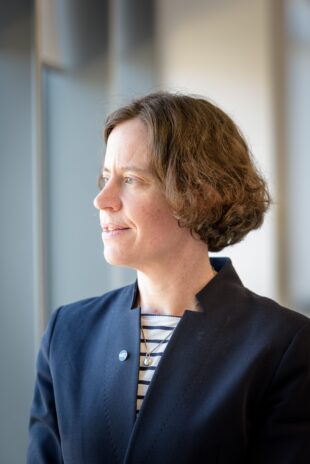
As our strategy and technical dirctor, Rebecca is responsible for setting our corporate strategy, as well as defining our approach to innovation. But first and foremost, as part of our Executive team, she is leading our organisation, helping to drive our evolution from reprocessing to nuclear clean-up.
Rebecca said:
While I have a specific area of expertise and responsibility with strategy and technical/innovation, I'm part of the Executive, here to lead the business, support the Chief Executive Officer and enable the workforce to do their nationally important work.
I believe in the work we are doing, and the people who are doing it. As an ambassador for our business, a significant part of my role is to represent the business in local, national and international arenas. To help our stakeholders understand the challenges we are facing and the progress we are making.
As our mission on the Sellafield site is changing, and we are introducing changes at a corporate level to make our business fit for the future. It is our job as an Executive to help the business, our employees, navigate the inevitable uncertainty that comes with change.
Andi Rutherford, driving greater inclusion for the LGBT+ community
Andi works in project management at Sellafield. She transitioned in 2015 and is a champion for LGBT+ within Sellafield Ltd and beyond.
An active member of the company’s Equality, Diversity and Inclusion Council, Andi led the development of a LGBT Hub. She also supports charities to improve their equality, diversity and inclusion.
Andi said:
I was initially reluctant to take up the role of a LGBT+ champion, but realised that if no-one took up the role, there would be people like me across the company who didn’t have anywhere to turn for support at work. If sharing my story helps even one person, then it is worth doing.
I want to see a progressive, diverse, workplace where people have the confidence to be who they are, and to encourage them to be positive and realise their potential. Removing the stigma of being different won’t just happen on its own. It needs people to drive a positive change
My own life experiences showed me that the biggest barrier to achieving success can be self-confidence. I can show that decisions I have made in the last five years have motivated me, and I now see challenges as opportunities my aim is to pass that on to others and help them break down their personal glass ceilings.
Rebecca Stamper, driving the voice of the next generation
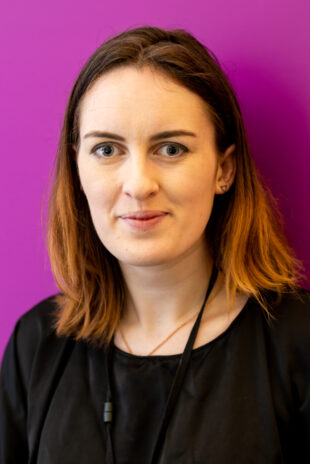
Our Next Generation Executive - a shadow to our formal Executive team – aims to bring diversity of thought and the voice of those earlier in their career to our governance arrangements.
Each member of the Executive has a ‘shadow’ member and as a group they receive the same papers as our Executive and hold the same meetings.
Just as the Executive has a Chief Executive Officer in the shape of Paul Foster, the Next Generation Executive needed a leader.
Step forward Rebecca Stamper, a driving force for change.
Rebecca said:
We are bringing the thoughts, opinions and perceptions of a new generation to the business of running Sellafield. We can challenge norms, ask questions and bring about positive change. We are helping Sellafield Ltd become the business it wants to be.
Being part of the Next Generation Executive has helped me to drive change across the business.
But you don’t need a label, anyone can be a driving force for change, all you need is passion, will and determination.
Dorothy Gradden, driving nuclear risk reduction

As head of the teams tackling the decommissioning of Sellafield’s First Generation Magnox Storage Pond and Pile Fuel Storage Pond, Dorothy is driving the clean-up of two of the highest risks in the country.
Her relentless determination isn’t just delivering nationally important environmental remediation, its inspiring the next generation of female leaders.
Dorothy said:
There is no blueprint for the challenge we have in cleaning up these legacy nuclear storage ponds. I encourage my teams to make use of technical innovation to accelerate retrievals, because if we do things the way that we have always done them we will get what we have always got.
But technical innovation doesn’t necessarily mean ‘complex engineering solution’. The best approach to a challenge may be to give skilled operators the use of remotely operated vehicles - combining technology with human experience.
The most crucial thing I can do to help my teams is to trust their judgement and give them processes that help them, rather than procedures that constrain them.
Joanne Griffin, driving inclusivity and gender equality
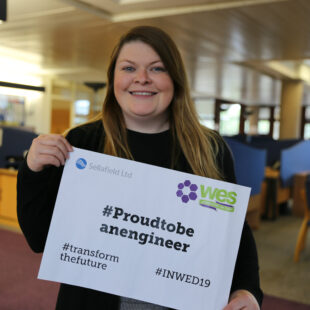
Joanne is a Principal Mechanical Engineer and was one of the first female Fellows of the Institute of Mechanical Engineering. She is one of the forces behind our drive towards a more inclusive working environment and equality for male and female engineers.
Joanne said:
Achieving true equality isn’t about hitting target numbers or quotas of women in certain roles, teams or disciplines. It is about more women being selected for roles based on their skills and experience. Being selected because they are the best person for the job.
But to get to that point we must break down barriers and inspire future generations of female leaders, engineers, welders… you name it… by showing them that anything is possible.
I am proud to be driving that change by doing practical things like our recent Women’s Engineering Society 100-year anniversary event. We celebrated the engineering talent that we already have across the organisation and you can already see that the tide is turning.
Hillary Crosthwaite, driving the digitisation of our business
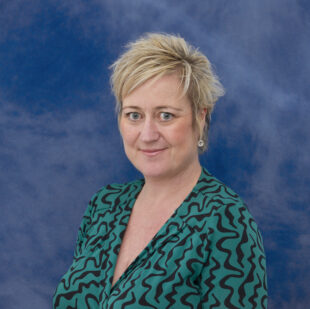
How do you create the digital and operational business environment that we need to deliver our mission as quickly and successfully as possible? More specifically, how do you digitise an almost 80-year old nuclear site?
Meet Hillary Crosthwaite, the woman charged with driving the digitisation of Sellafield.
Hillary said:
Creating a modern, digital, environment for our business might sound like a project designed to give everyone the latest tablet or phone, but it runs much deeper than that.
Digital isn’t just new technology. It involves people, processes, culture and ways of working. When we created a new working space – our innovation suite – we did make sure that the right technology was in there, but we also considered all of the other elements that people need to foster collaboration and innovative thinking. Sometimes that is a low-tech solution like a white board and marker pen.
I love being part of the disruptive force in our organisation, pushing the digital changes at Sellafield forward.
Alison Strafford – driving menopause awareness

As the woman responsible for business and financial reporting for the retrievals part of our business, Alison leads a team of 65 business, project controls and risk practitioners. Together they track more than £300 million of spends every year, making sure that projects are on target and money is being spent wisely.
When menopause hit, and support was lacking, Alison started her own drive to raise awareness.
Alison said:
When menopause (or technically peri-menopause) symptoms hit me, they knocked me sideways. There was limited support available but perhaps even worse, the subject was considered a bit taboo.
At some point menopause will impact every woman - at least to some degree. The severity of the symptoms varies from woman to woman and can have a serious impact on the way we work. We can’t begin to support individual women when the topic itself is taboo or difficult to talk about. So, our first step is raising awareness.
I’m trying to make it easier for women to find information by adding it to our Equality, Diversity and Inclusion Hub and, with the support of our Executive, created a support and action group. We are at the very early days, but I am proud to be part of a movement that breaks the taboo of menopause within my company.
Rachel Barnard, driving an improvement in bullying and harassment

When a survey revealed some startling figures around bullying and harassment in the workplace, we acted.
That action included a personal commitment to draw a line under bulling and harassment from the very top of our organisation, through to increasing the support available to anyone who felt they were being bullied or harassed.
We also introduced more resources to speed up the investigation process and trained more mediators.
These mediators, including Rachel, are a key part of our response to bullying and harassment.
Rachel said:
Tackling bullying in harassment in the workplace is by no means an overnight process. But rolling out internal, local mediation, is a big step forward in working towards reducing bullying and harassment across our business. Mediation can be a great way of healing relationships between two employees by empowering communication and the problem-solving process to support people to resolve their conflict.
As a trained mediator I am extremely proud to be part of this change and intend on playing a part in improving working arrangements and relationships for my colleagues and helping us ensure that all of our employees feel comfortable in their place of work.
Saskia May, driving accessible access to mental health and wellbeing support
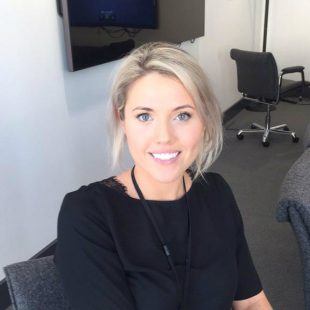
When we asked employees to suggest ways to create a positive change to the business, Saskia May - who provides technical support to our Spent Fuel Management portfolio office – knew exactly what to suggest.
She took her passion for equality and diversity and created an app to support employee wellbeing.
Saskia said:
Through my role on the Women in Nuclear succession committee, I see first-hand the benefits of focussing on workplace equality and diversity.
When the opportunity came up to suggest ways to create a positive change in our business, me and my good friend Chris knew exactly what we wanted to pitch.
We wanted to provide a one-stop-shop for employees to get information and support on mental health and wellbeing, whenever they needed it. An app that they helped to create and could access on work phones and personal devices, 24 hours a day.
We spent a lot of time speaking to individuals in a variety of roles across the business to find out what would really help those who need support or advice for either themselves or colleagues. From these conversations, the pilot Wellbeing app was built. Feedback so far has been fantastic and we’re building the final product.
Emma Law, driving how we communicate
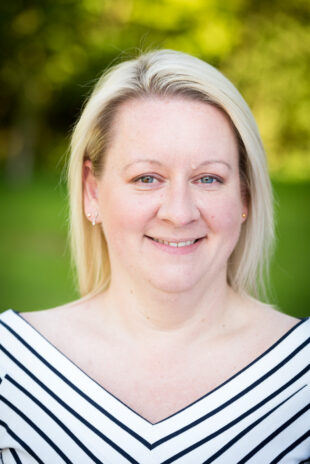
The way that businesses engage with their audiences is changing. It is increasingly shifting from push to pull, from tell to engage, and from traditional marketing to inbound marketing.
Emma is driving a change in the way we communicate – from the language we use (goodbye acronyms) to where we share our stories (hello socials).
Emma said:
The Sellafield story is a fascinating one, but you sometimes have to peel back the layers of business jargon and complicated scientific processes to find it. Our audiences, just like everyone else, are information rich and time poor. It’s no longer reasonable to expect people to come to our website – or any of our channels – to actively look for a story and then wade through reams of written details.
It’s not their responsibility to come and look. It’s our responsibility to create great content, to bring the story to life, and then to make it as easy as possible for people to find and engage with. To take our story to them.
“We’re at the start of our brand evolution (the ‘nuclear power plant’ moniker is a difficult one to shake) but there isn’t a more exciting communication challenge.
Claire Gallery-Strong, driving gender balance
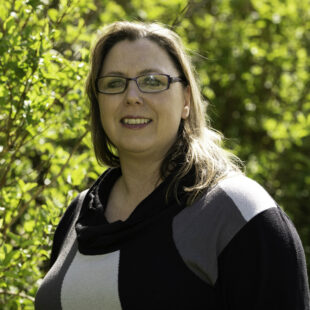
In her day job as Head of Enterprise Portfolio Development, Claire is driving for consistency in how we approach the prioritisation of our enterprise resources.
Consistency and equality are also at the heart of Claire’s other passion – addressing gender balance.
Claire said:
The nuclear industry has a gender balance of just 22% women. We can make our industry more diverse and inclusive, but the issues are complex and need many action strands to be successful.
My options were to stand on the side line or do something about it.
I took on the challenge to make a difference and worked to create Women in Nuclear UK with a mission to support and encourage more women to enter the industry and stay. We provide mentoring, networking and leadership skills training.
We’re not stopping there. On International Men’s Day we will start to address more generic barriers to entry and will look at how barriers to men taking on more caring responsibilities can be removed. Evening the field so that men and women can share domestic responsibilities.
Emma-Jayne Gooch, driving the SME agenda
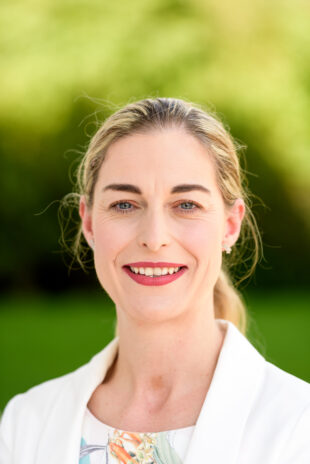
Emma-Jayne has brought the lessons she learnt from running an SME into Sellafield Ltd to remove barriers and make it easier to work with us, open communication routes, and run the SME government agenda on behalf of the company.
Emma-Jayne said:
I am extremely proud and humbled to be able to lead the change at Sellafield around opening the doors for opportunity within our supply chain. The last 2 years have been a whirlwind but the things I am most proud of in delivering that change include launching LINC with Sellafield Ltd. This is a procurement platform that gives SME’s an opportunity to work directly with Sellafield in solving our challenges.
We’ve also launched our SME Strategy and Actions Plan and taken our SME spend from 25% to 30.9% in one year.
“Of course, these things couldn’t have been delivered without my awesome team and fantastic supply chain colleagues.
Jade White, driving gender equality in engineering
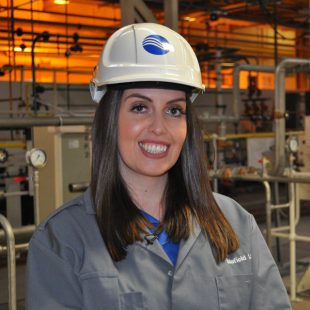
As a Welding Engineer, Jade provides specialist welding, fabrication and materials technology services to the Projects and Operational teams at Sellafield.
Her skills and experience have been recognised beyond Sellafield and she was included in The Guardian’s Top 50 Women in Engineering for 2019.
During her 11-year career at Sellafield, she has spoken widely on equality in engineering.
Jade said:
Promoting women in engineering is something I feel passionate about. Sharing the stories of how women got into their roles and the difference they are making is the best way to break stereotypes. And breaking stereotypes is how we encourage the next generation.
To be one of those stories, and to appear in the Top 50 Women in Engineering list was a wonderful achievement and I felt honoured to have been picked alongside fellow females in successful engineering careers. But what is really exciting is the thought that reading my story might have inspired another girl to reach for her own career in engineering.
Angela Seeney, driving the transformation of our business
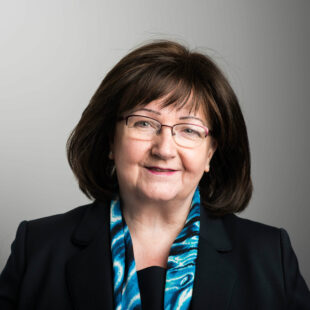
Angela’s career spans the public and private sector and started with the illustrious honour of being the first female apprentice on the Engineering and Industrial Training Board scheme.
As Executive Director for Transformation, she is driving the transformation of Sellafield Ltd – an ambitious programme that seeks to transform almost every aspect of our business.
Angela said:
We want to enhance performance and prospects for our business, our staff, partners and stakeholders as well as our broader communities through transformative changes. It is an honour to drive a change that will transform everything from how we develop our business leaders and work differently with our supply chain to how we use innovation to accelerate our mission. All while delivering millions of pounds of savings for the UK taxpayer.
Jo Stabler, driving autism awareness
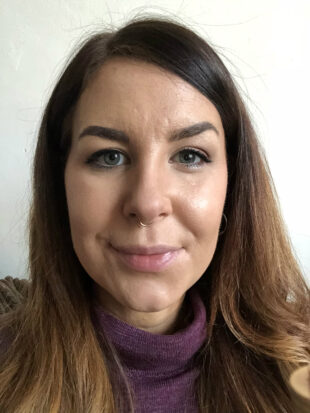
In addition to her day job as a Performance Improvements Advisor at Sellafield, Jo is also the co-founder and co-chair of the site’s Autism Support Network. Through this work she is driving a more inclusive culture at Sellafield.
Jo said:
We created the network to support parents and primary carers of children with Autism, and employees who themselves have a diagnosis.
As well as offering support to our members both at work and at home, we work to educate the wider workforce at Sellafield and our supply chain of the reality of living and working with Autism.
If I could share one message with people, it is that people with autism at Sellafield are not alone and there are so many positives in our lives that we want to share.
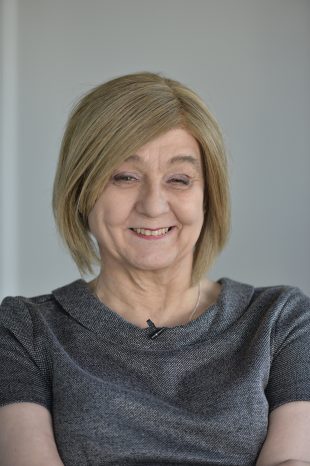
Recent Comments